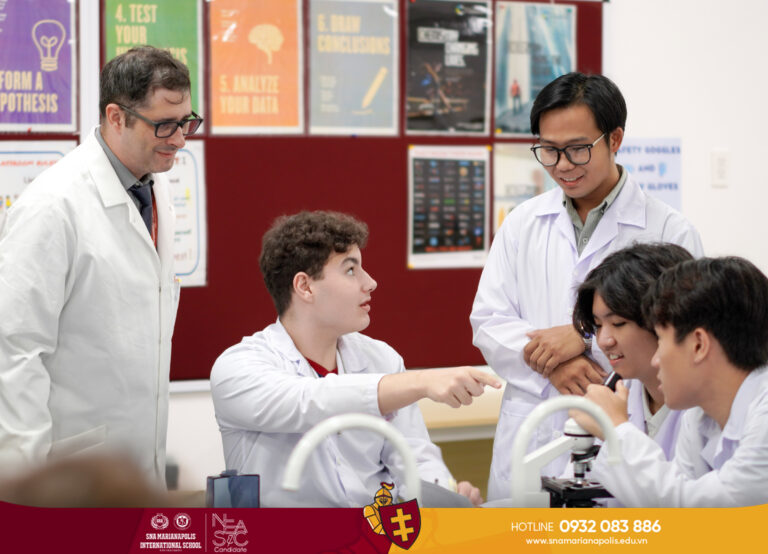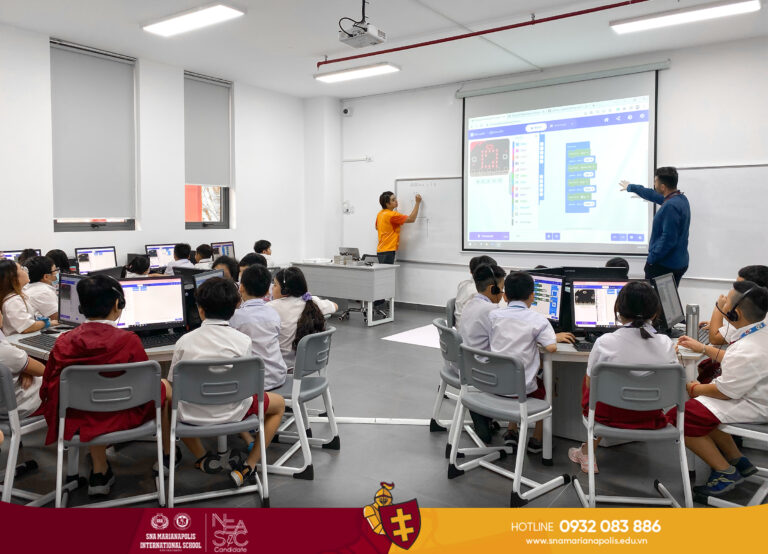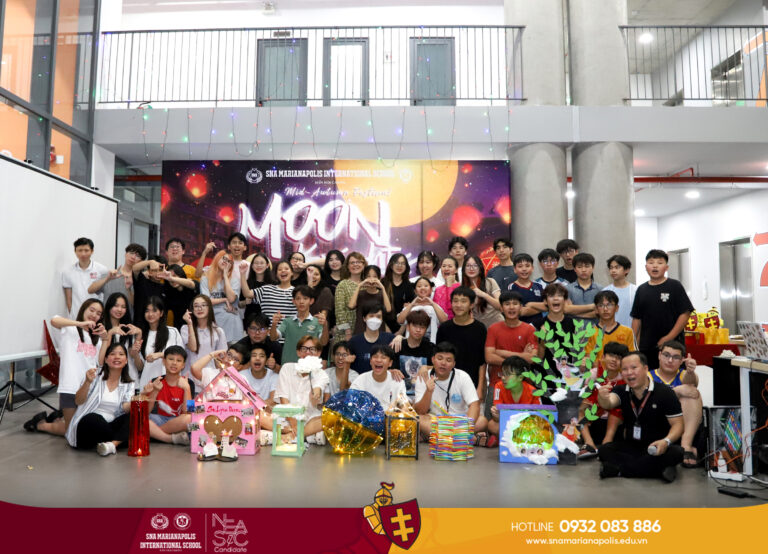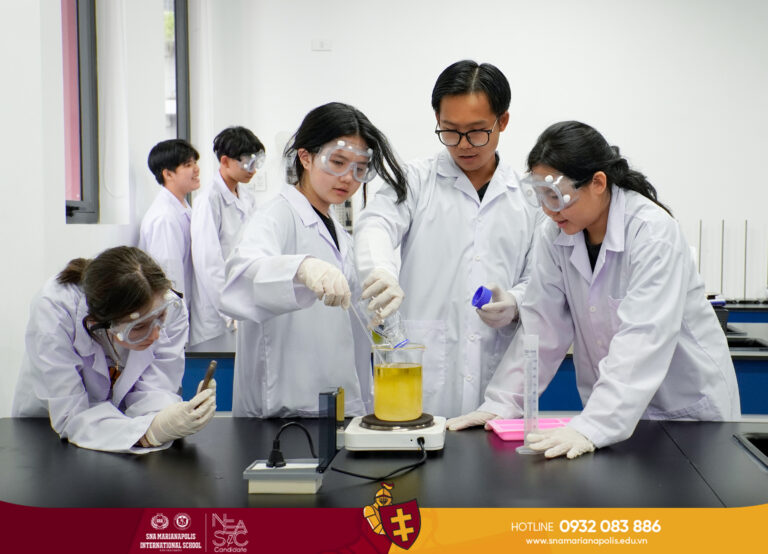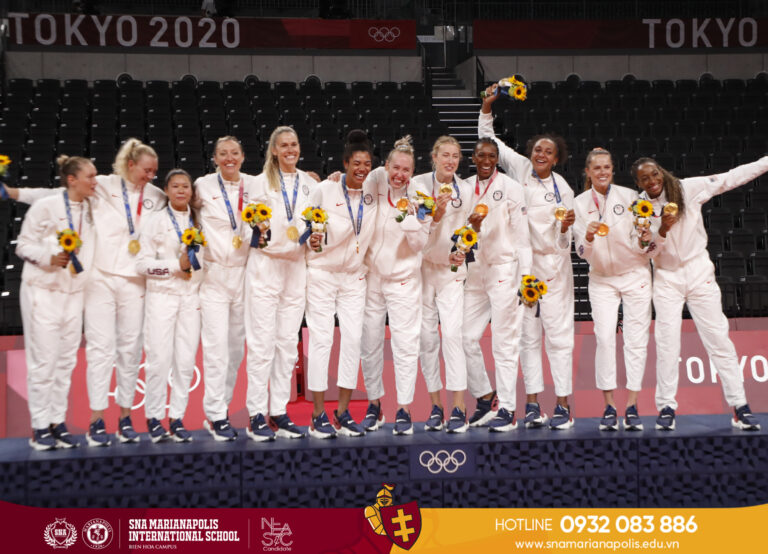MODERN TEACHING METHODS AT SNA MARIANAPOLIS
With a nearly 100-year-old history of education passed down from Marianapolis Preparatory School, Connecticut, USA, SNA Marianapolis International School, the first international school in Bien Hoa city, Dong Nai province, offers students an authentic American education. In accordance, the school’s philosophy and teaching approach are entirely distinct, forward-thinking, and contemporary, with the student always playing the central role. Students at SNA Marianapolis have the power to speak up, make decisions, and even control their own education. To assist students in developing into fully competent leaders, SNA Marianapolis creates a classroom setting that promotes freedom and active learning within a framework of discipline and order. Here are the main components of the school’s unorthodox teaching methods.
1/ Student-Centered Approach
The concept of student–centered learning has been credited in the early of 20th century and becomes a popular modern educational trend in many different large and small scaled educational institutions around the world, which aims to help promote the active initiative and creativity of learners. In which, students are the ones who research and discover knowledge by themselves under the guidance, suggestions and information provided by the teacher. To implement this method of teaching requires teachers to be lifelong learners, always improving their knowledge, upgrading skills, and not only paying attention to their students but also what they are taught and learned.

At SNA Marianapolis, teachers are guided by the “student-centered” approach when creating their lessons, assessments, and class schedules to be efficient and appropriate for each student. Any SNA Marianapolis classroom, including physical education, utilizes this teaching methodology.
Mr. Donald White, a Health and Physical Education teacher for grades 8-10, realizes that many students have overlooked the ability to comprehend and analyze their brains to solve all problems in life and instead turned to the comfort of smart devices. His tactics to cope with this overreliance is having students “think for themselves” in questions such as “What kind of food will nourish your body” or “How to choose good vegetables from the market.” This “show, don’t tell” strategy fully embodies the school’s student-centered teaching philosophy.
2/ Alternative Assessments
Competency assessment exams in conventional education are frequently constrained by traditional testing techniques, both in terms of method (oral test, multiple choice test, essay test, etc.) and frequency (first hour check, surprise check, regular tests, quarterly tests, final exam, etc.). This evaluation approach will make it more difficult for teachers to update, supplement, and fill students’ knowledge gaps since they won’t be able to fully comprehend the capacity, level, and knowledge that their students currently possess.

Regarding to this, a variety of assessment methods is implemented at SNA Marianapolis. Each teacher uses a different testing methodology that not only aids in the development of their own style of instruction but also assists students in reducing exam anxiety.

As Mrs. Joanne Gökçedağ, a science teacher for grades 7 and 8, shared: “I steer away from traditional tests as much as I can.” Instead, she would offer a diversity of assessment formats, including quizzes, worksheets, presentations, Kahoot or Ed Puzzles games, and of course, projects.

Joining Mr. Onur’s math class, whom is a 21st-century teacher from Turkey, it was the epitome of various integrated assessments, from formative to summative assessments, from formal tests to project-based tasks. Some assessment projects simulate real-life situations such as role-playing as an inspector or hunter, shopping, running an Algebra café, or using fractions in creating an art object. These promise the best ways to keep students engaged while practicing their math skills and enjoying arts.
3/ Integration of Technology in Teaching
A new era in humankind’s scientific progress started with the Fourth Industrial Revolution (Industry 4.0), which has brought changes to a wide range of societal and personal spheres, including education. SNA Marianapolis provides students with cutting-edge machinery and equipment systems, lectures, and the most recent technologies in teaching and learning methods in order to keep up with the digital age and prepare them for the upcoming 5.0 era. This allows students to develop their critical thinking skills, easily adapt to new scenarios, and succeed more in an ever-shifting world.

As a means of achieving this “preparation,” one of the “bridges” acting as a “steppingstone” is the school’s digital library, which also represents the “student-centered” approach to teaching. With the goal of educating students to be critical thinkers and informed users, the library strives to subscribe to a vast range of credible, prestigious electronic database platforms such as Emerald, JSTOR, EBSCO, and Science Direct – Popular databases used by most other institutions in the world and hence maximize their learning and research experience on an international level.
4/ Proactive Learning
To encourage students to take the initiative in their learning is one of the “essential” necessities for the “student-centered” method to be successful. While the atmosphere at SNA Marianapolis varies from class to class, in overall, the emphasis is always on dynamism, fun, and harmony between teachers and students so that learning doesn’t become restrictive and stressful, rather it is filled with the enthusiasm and excitement of learning more new things, which transforms learning into a dual learning process that builds lessons and aids in each person’s positive development.

There is more than one way that students can develop engaged learning in Mr. Onur’s class, largely through hands-on activities. He admits that the subject is inherently abstract which demands the need for constant illustrations. Instead of dealing with intangible concepts, “if a student has a 3-D object that they can hold and observe, the learning takes place way better” – he acknowledges the idea that has been backed by multiple research articles. Following this, he uses tiles to teach Algebra which he deems the most challenging area of Math.
It is the originality and distinctiveness of the aforementioned approaches to instruction that helped to create such an educational culture that is exclusive to SNA Marianapolis and is also one of the specialties that have won so many parents’ trusts in sending their children to the school.
SNA Marianapolis International School – Bien Hoa Campus
- Location: 397, 30/4 Street, Quyet Thang Ward, Bien Hoa City, Dong Nai Province
- Website: https://snamarianapolis.edu.vn/
- Hotline: 0932 083 886
- Email: info@snamarianapolis.edu.vn



